
How to Use lipo battery 3.7V: Examples, Pinouts, and Specs
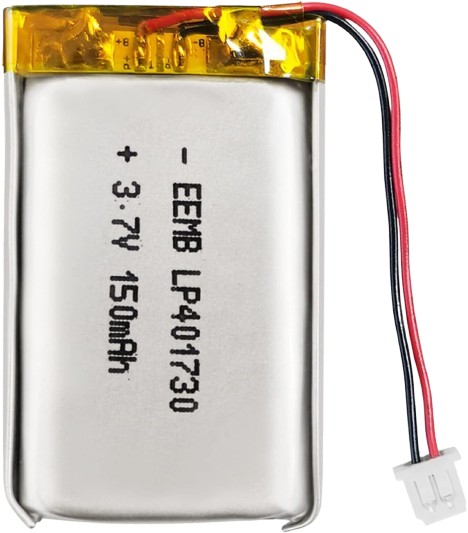
 Design with lipo battery 3.7V in Cirkit Designer
Design with lipo battery 3.7V in Cirkit DesignerIntroduction
A lithium polymer (LiPo) battery is a rechargeable battery that provides a nominal voltage of 3.7 volts. It is widely used in portable electronics, remote-controlled (RC) devices, drones, and other applications requiring lightweight and high energy density power sources. LiPo batteries are known for their compact size, flexibility in shape, and ability to deliver high discharge currents, making them ideal for modern electronic devices.
Explore Projects Built with lipo battery 3.7V
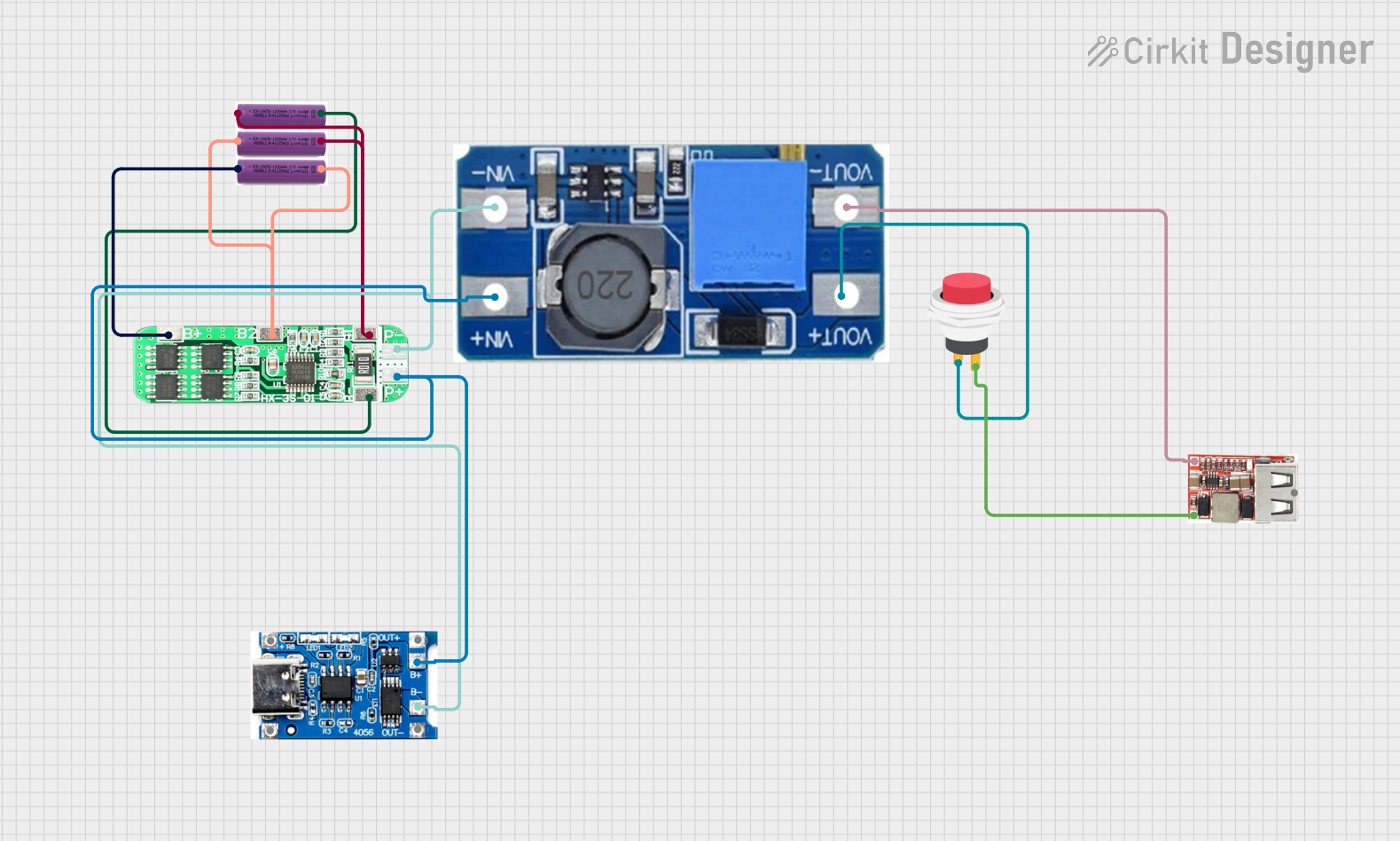
 Open Project in Cirkit Designer
Open Project in Cirkit Designer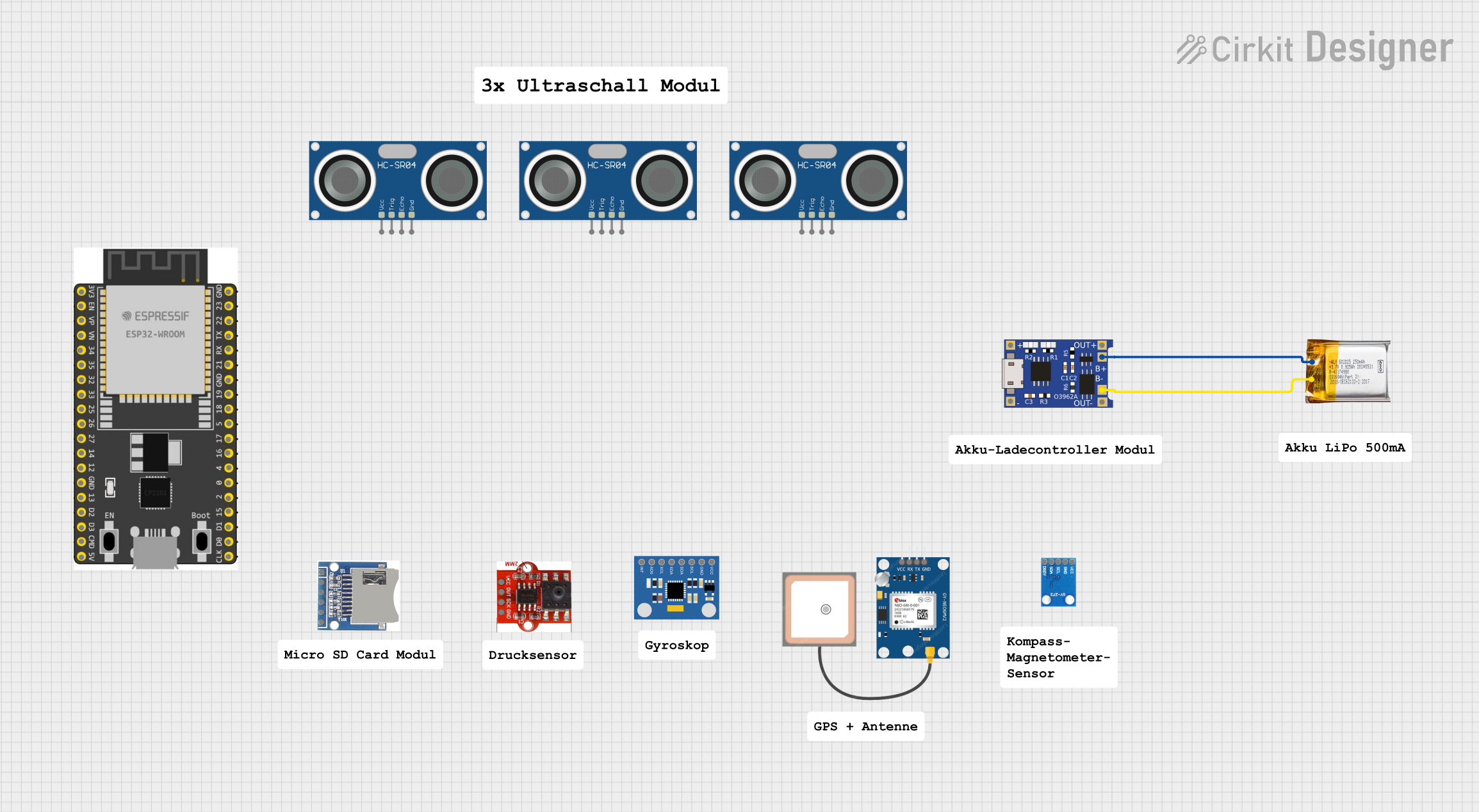
 Open Project in Cirkit Designer
Open Project in Cirkit Designer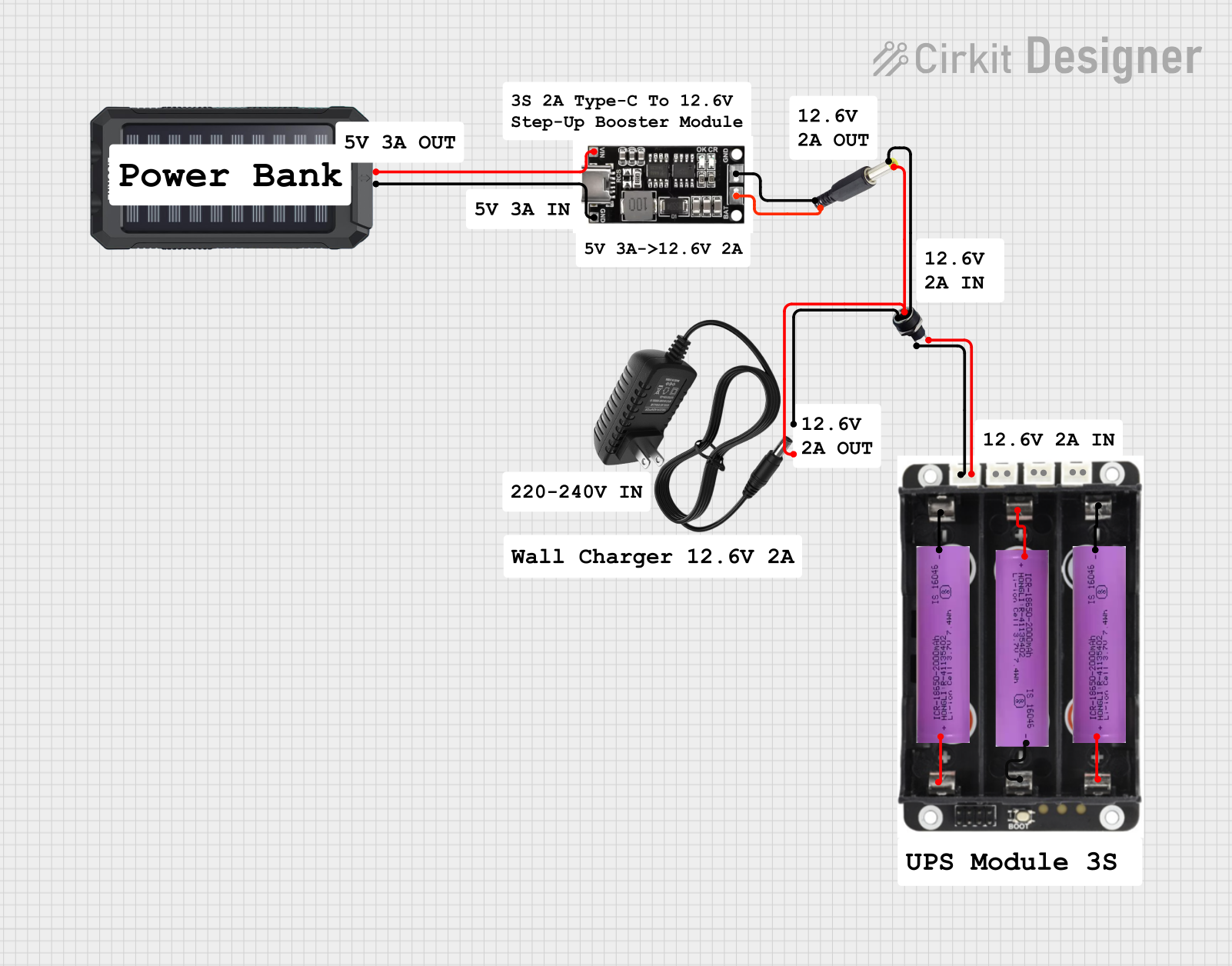
 Open Project in Cirkit Designer
Open Project in Cirkit Designer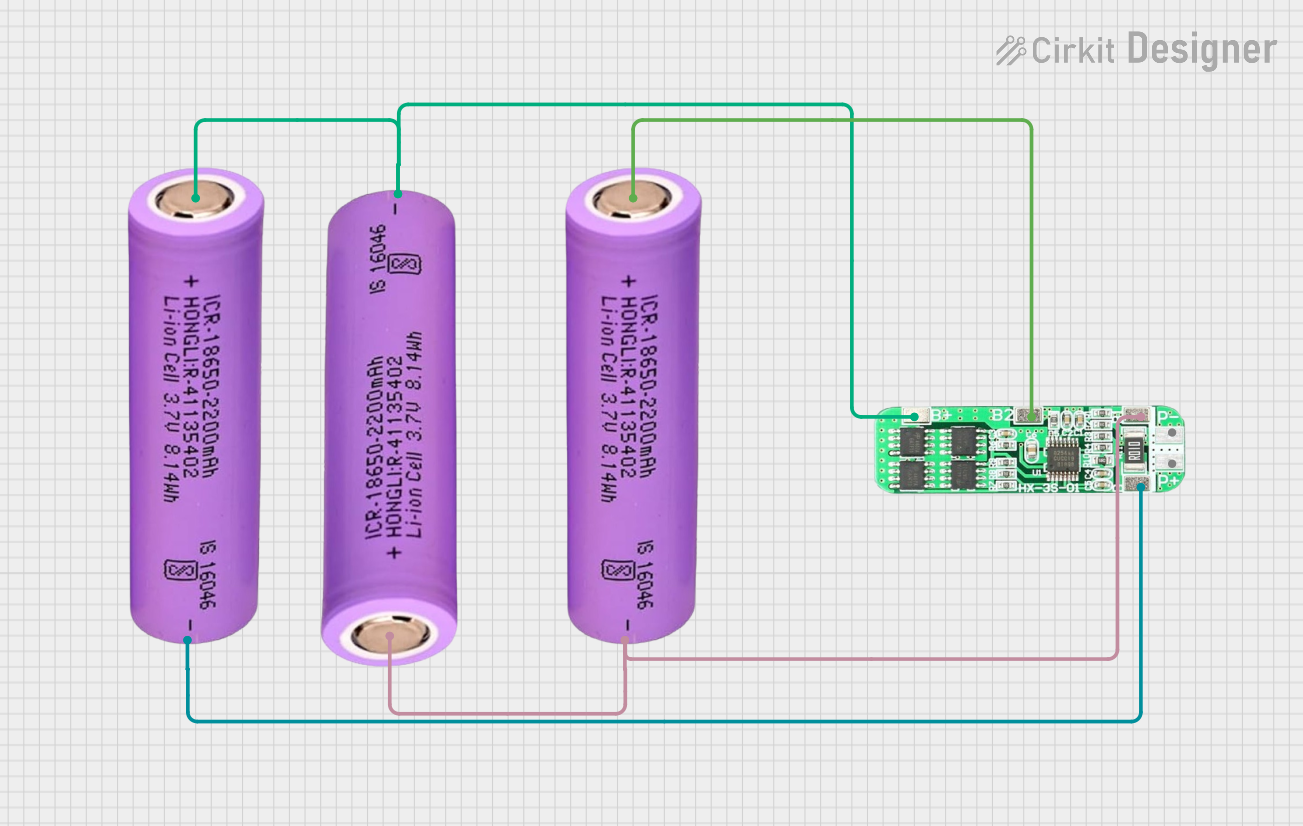
 Open Project in Cirkit Designer
Open Project in Cirkit DesignerExplore Projects Built with lipo battery 3.7V

 Open Project in Cirkit Designer
Open Project in Cirkit Designer
 Open Project in Cirkit Designer
Open Project in Cirkit Designer
 Open Project in Cirkit Designer
Open Project in Cirkit Designer
 Open Project in Cirkit Designer
Open Project in Cirkit DesignerCommon Applications
- Portable electronic devices (e.g., smartphones, tablets, wearables)
- Remote-controlled vehicles (e.g., drones, cars, planes)
- Robotics and IoT devices
- Backup power supplies for small circuits
- DIY electronics projects
Technical Specifications
Below are the key technical details of a typical 3.7V LiPo battery:
| Parameter | Value |
|---|---|
| Nominal Voltage | 3.7V |
| Fully Charged Voltage | 4.2V |
| Discharge Cutoff Voltage | 3.0V (varies by manufacturer) |
| Capacity | Varies (e.g., 500mAh, 1000mAh, 2000mAh) |
| Maximum Discharge Rate | Typically 1C to 30C (varies by model) |
| Charging Current | Typically 0.5C to 1C (consult datasheet) |
| Connector Type | JST, XT30, XT60, or bare leads |
| Weight | Varies based on capacity and size |
Pin Configuration
LiPo batteries typically have two or three wires. Below is a description of the common pin configuration:
| Pin | Wire Color | Description |
|---|---|---|
| 1 | Red | Positive terminal (+) |
| 2 | Black | Negative terminal (-) |
| 3 | (Optional) White or Yellow | Balance lead for charging (if present) |
Note: Always refer to the specific battery's datasheet for exact specifications and pinout.
Usage Instructions
How to Use the LiPo Battery in a Circuit
Connect the Battery:
- Identify the positive (red) and negative (black) terminals.
- Connect the positive terminal to the positive rail of your circuit and the negative terminal to the ground rail.
- If using a balance charger, connect the balance lead to the appropriate port on the charger.
Voltage Regulation:
- Use a voltage regulator if your circuit requires a voltage lower than 3.7V or a stable output.
- For microcontrollers like Arduino, ensure the input voltage is within the acceptable range (e.g., 5V via a boost converter).
Charging the Battery:
- Use a LiPo-compatible charger to safely charge the battery.
- Set the charger to the correct voltage (4.2V for a single-cell LiPo) and current (typically 0.5C to 1C of the battery's capacity).
Discharge Protection:
- Use a battery management system (BMS) or a low-voltage cutoff circuit to prevent over-discharge, which can damage the battery.
Important Considerations and Best Practices
- Avoid Overcharging: Never charge the battery above 4.2V per cell.
- Avoid Over-Discharging: Do not let the voltage drop below 3.0V per cell.
- Monitor Temperature: Do not use or charge the battery if it becomes excessively hot.
- Storage: Store the battery at a voltage of approximately 3.8V per cell for long-term storage.
- Safety: Avoid puncturing or short-circuiting the battery, as this can lead to fire or explosion.
Example: Using a LiPo Battery with Arduino UNO
To power an Arduino UNO with a 3.7V LiPo battery, you will need a boost converter to step up the voltage to 5V. Below is an example circuit and code:
Circuit Setup
- Connect the LiPo battery to the input of the boost converter.
- Set the boost converter output to 5V.
- Connect the boost converter output to the Arduino UNO's 5V and GND pins.
Example Code
// Example code to read a sensor and display data via Serial Monitor
// This assumes the Arduino is powered by a 3.7V LiPo battery with a boost converter
const int sensorPin = A0; // Analog pin connected to the sensor
int sensorValue = 0; // Variable to store the sensor reading
void setup() {
Serial.begin(9600); // Initialize serial communication at 9600 baud
}
void loop() {
sensorValue = analogRead(sensorPin); // Read the sensor value
Serial.print("Sensor Value: ");
Serial.println(sensorValue); // Print the sensor value to the Serial Monitor
delay(1000); // Wait for 1 second before the next reading
}
Note: Ensure the boost converter is properly configured to output 5V before connecting it to the Arduino.
Troubleshooting and FAQs
Common Issues
Battery Not Charging:
- Cause: Incorrect charger settings or damaged battery.
- Solution: Verify the charger is set to 4.2V and the correct current. Inspect the battery for physical damage.
Battery Drains Quickly:
- Cause: High discharge rate or aging battery.
- Solution: Check the load on the battery and ensure it is within the discharge rating. Replace the battery if it is old.
Battery Swells or Overheats:
- Cause: Overcharging, over-discharging, or physical damage.
- Solution: Stop using the battery immediately. Dispose of it safely according to local regulations.
Arduino Not Powering On:
- Cause: Insufficient voltage or incorrect wiring.
- Solution: Ensure the boost converter is outputting 5V and all connections are secure.
FAQs
Q: Can I connect a 3.7V LiPo battery directly to an Arduino UNO?
A: No, the Arduino UNO requires a minimum of 5V to operate. Use a boost converter to step up the voltage to 5V.
Q: How do I know when my LiPo battery is fully charged?
A: A fully charged LiPo battery will have a voltage of 4.2V per cell. Most chargers will indicate when charging is complete.
Q: Can I use a LiPo battery without a protection circuit?
A: It is not recommended. A protection circuit prevents overcharging, over-discharging, and short circuits, ensuring safe operation.
Q: How long can I store a LiPo battery?
A: LiPo batteries can be stored for several months if kept at a storage voltage of approximately 3.8V per cell and in a cool, dry place.
By following these guidelines, you can safely and effectively use a 3.7V LiPo battery in your projects.